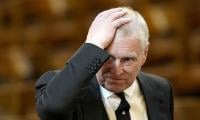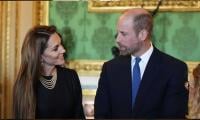Aid, institutions and frameworks
Over the last one decade, Pakistan has registered very low and volatile economic growth. The economy grew with an average rate of 3 percent between 2008 and 2018, ranging from 0.36 percent in 2009 to 5.8 percent in 2018.
It is expected that Pakistan will continue to show low growth of real GDP ranging from 4 percent to 4.5 percent against the 6.2 percent target for real GDP growth for 2019. This coupled with rising fiscal deficit of 5.5 percent to 6.5 percent of GDP with the current account deficit escalating to 5.5 percent of GDP. Despite all these challenges, the government has remained committed to achieve higher, inclusive and sustainable growth and adopted wide-ranging structural reforms in all sectors of the economy.
On the other hand, South Asian economies have exhibited the highest growth rate among other regions of the worlds in the last decade. The strong growth has resulted in a substantial decline in poverty in the region. According to the World Bank, the share of people living on less than $1.9 per day at 2011 international prices declined from 44.5 percent in 1990 to 15.1 percent in 2013 in South Asia, particularly in India.
Pakistan has also shown a significant decline in poverty, from 50.4 percent in 2005-06 to 24.3 percent in 2015-16. However, despite the significant decline in poverty, over 50 million people live in poverty and more than 75 million people are deprived of basic needs such as health, education and shelter.
The economic growth has not resulted in job creation at the rate necessary to accommodate the approximately 1.5 million people who enter the workforce every year in Pakistan. Education and health indicators show miserable progress compared to other South Asia countries. Female labour force participation rates are lowest in Pakistan as compared with the rest of the region. Budget allocation remains less than three percent of GDP in the social sector due to a weak financial position and high debt obligations.
Inclusive growth is vital to alleviate poverty, achieve social inclusion and to promote decent employment for all. It is the prerequisite to achieve Sustainable Development Goals (SDGs) agenda by 2030. Goal 8 is to “promote inclusive and sustainable economic growth, employment and decent work for all” of the SDGs agenda. It aims to “achieve full and productive employment and decent work for all women and men, including for young people and persons with disabilities, and equal pay for work of equal value” by 2030.
How to achieve such inclusive growth? Lack of financial resources is one of the major bottlenecks facing Pakistan. It hinders economic growth by lowering the development expenditure. Pakistan needs to borrow to facilitate its development process, to invest in social development and to achieve sustainable development. However, rising public debt may also pose economic challenges. A high and unsustainable level of debt hinders economic growth by lowering the development expenditure due to heavy debt-servicing requirements. Pakistan should pursue an integrated approach towards economic revival and debt reduction, which is the key to prosperity.
External assistance is the main source of financing to address financial imbalances including the twin deficit and to manage debt obligations. International financial institutions (IFIs) can play an important role to achieve inclusive growth in Pakistan. These institutions are meant to provide financial, technical and professional support in the design and implementation of social and economic development projects; they include the World Bank (WB), the International Monetary Fund (IMF), and the Asian Development Bank (ADB).
The WB’s Country Partnership Strategy (CPS) for Pakistan was structured to achieve shared prosperity and poverty reduction. It focuses on energy, economy, extremism and education and “the priorities of the proposed vision 2025: transforming the energy sector; supporting private sector development; reaching out to the underserved, neglected, and poor; and accelerating improvements in services”. The CPS envisages indicative financing of over $13 billion for the period 2015-20. Pakistan’s portfolio has 41 investment lending projects under implementation with a total amount of $6.98 billion.
Similarly, the ADB is working to upgrade infrastructure and carry out institutional reforms in Pakistan. According to ADB Strategy 2020, “high, efficient and sustained growth; social inclusion to ensure equal access to opportunities; and social safety nets to protect the most vulnerable and deprived are the three critical policy pillars supported by good governance and institutions for an inclusive growth strategy that aims at high and sustained growth while ensuring that all members of the society benefit from growth”.
Despite having significant foreign assistance, Pakistan fails to achieve the desired objective of inclusive and sustainable development. This has generated a huge debate on the effectiveness of aid in Pakistan. Empirical literature has shown that foreign assistance has a negative impact on economic growth. However, literature also shows that foreign aid has a positive and significant impact on economic growth in Pakistan when it is accompanied by sound macroeconomic policies.
This shows that the main challenge is the proper utilisation of foreign assistance, not foreign assistance itself. Numerous factors are held responsible for the poor utilisation of foreign assistance. First, poor institutional arrangements to negotiate, design and implement projects funded under foreign assistance. The design and implementation arrangement of the projects are managed by donor-provided resources due to inadequate human capacity. These technical resources protect donors’ interests rather than those of the recipient. At the end, project assessment and evaluations are also done by a third party hired by donors. This shows that our administrative machinery is handicapped and fails to deliver its objectives.
Second, a weak policy framework and poor institutions are also responsible for the negative relations between foreign aid and economic growth. Weak institutions allow rent-seeking activities that divert resources from productive to unproductive sectors. Research has also concluded that foreign assistance has a negative impact on economic growth due to weak macroeconomic policies and institutional framework.
The government of Pakistan is negotiating with the IMF to seek its 13th bailout package since the 1980s to overcome the current account deficit. Prime Minister Imran Khan met with IMF Managing Director Christine Lagarde at the World Government Summit in Dubai to discuss possible arrangements for a bailout to address current account deficit. The IMF reiterated that “decisive policies and a strong package of economic reforms would enable Pakistan to restore the resilience of its economy and lay the foundations for stronger and more inclusive growth…..protecting the poor and strengthening governance are key priorities to improve people’s living standards in a sustainable manner”.
This shows that Pakistan needs to launch a package of mega policy, structural and institutional reforms to receive this 13th bailout package. This calls for an appropriate institutional framework for productive use of assistance.
The writer is an assistantprofessor at COMSATS University Islamabad (CUI).
Email: Saima.nawaz@comsats. edu.pk
-
 Chad Michael Murray Admits 2000s Fame Could Have 'destroyed' Him
Chad Michael Murray Admits 2000s Fame Could Have 'destroyed' Him -
 Emma Stone Reflects On Diane Keaton's 'most Valuable' Lesson
Emma Stone Reflects On Diane Keaton's 'most Valuable' Lesson -
 Kanye West Once Paid $1 Million Per Day To Record Album: Here's Why
Kanye West Once Paid $1 Million Per Day To Record Album: Here's Why -
 Prince Harry Hopes To Show Archie, Lilibet Where He 'grew Up'
Prince Harry Hopes To Show Archie, Lilibet Where He 'grew Up' -
 Jacob Elordi Names Childhood Crushes Including A Major 60s Star
Jacob Elordi Names Childhood Crushes Including A Major 60s Star -
 Kristin Davis Dicusses Fate Of Her Sex And The City Character
Kristin Davis Dicusses Fate Of Her Sex And The City Character -
 Zara Larsson Steps Up Criticism Against 'evil' Policies
Zara Larsson Steps Up Criticism Against 'evil' Policies -
 Adam Sandler Jokes About Aging As He Accepts Career Honour
Adam Sandler Jokes About Aging As He Accepts Career Honour -
 Royal Stalker Cases Increase Following Harry, Meghan's Marriage: Report
Royal Stalker Cases Increase Following Harry, Meghan's Marriage: Report -
 Sarah Ferguson Eyes Princess Diana’s Private Letters In Bid To Secure Future
Sarah Ferguson Eyes Princess Diana’s Private Letters In Bid To Secure Future -
 Andrew Plots Secret Sales Of Royal Jewels Amid Royal Lodge Eviction
Andrew Plots Secret Sales Of Royal Jewels Amid Royal Lodge Eviction -
 Abbott Elementary Star Chris Perfetti Hints At What To Expect From Season 5
Abbott Elementary Star Chris Perfetti Hints At What To Expect From Season 5 -
 Prince William Always Ready To Step Up: ‘He’s Barely Able To Contain His Fury When Kate’s Involved’
Prince William Always Ready To Step Up: ‘He’s Barely Able To Contain His Fury When Kate’s Involved’ -
 Florida Woman ‘tricked Innocent Movers Into Helping Her’ $7k Burglary: Report
Florida Woman ‘tricked Innocent Movers Into Helping Her’ $7k Burglary: Report -
 Harry Deserves Top Protection As King Charles’ Son, Prince William’s Brother
Harry Deserves Top Protection As King Charles’ Son, Prince William’s Brother -
 Meghan Markle Receives Key Advice As Experts Warn She’s Doing Too Much
Meghan Markle Receives Key Advice As Experts Warn She’s Doing Too Much



